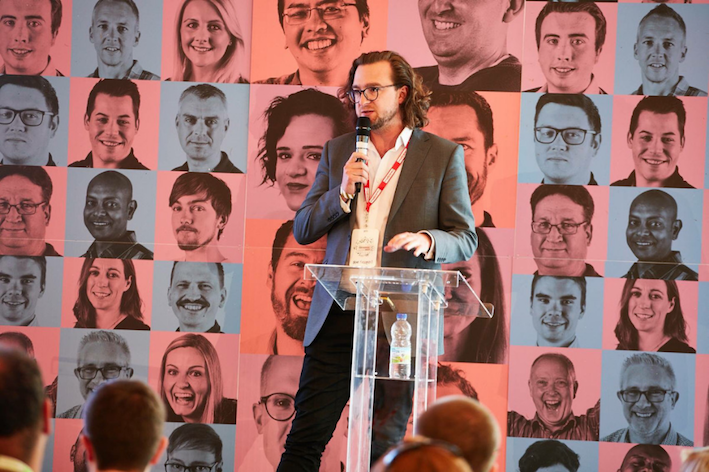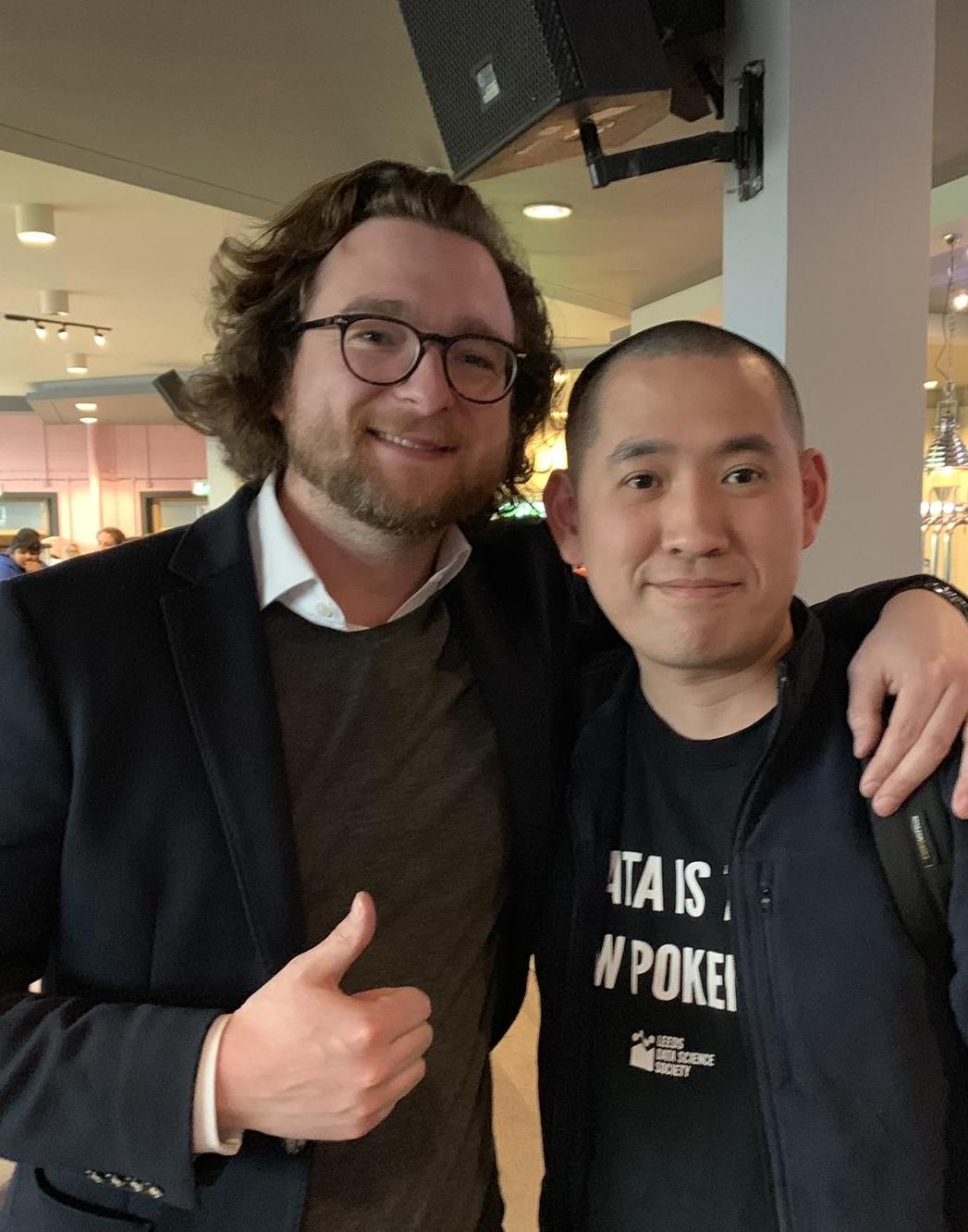
Blog | View my CV | Contact me
About
I’m James Waterhouse, currently Director of Business Intelligence for UKI at Flutter Entertainment based in Leeds, UK.
I’m passionate about anything analytics, data or data sciencerelated.
This site contains basic info about me, some of my random musings by way of a blog and my CV.
All views are my own.
Blog
Unicorns and pots of gold at the end of the rainbow
Posted on July 27, 2020
Written for the Data Leaders of the North Podcast
It’s a well discussed topic but I thought I’d throw my hat into the ring and write down my thoughts on what it takes to set up and run an effective data science team.
By no means do I have all the answers however having experienced the highs and lows of setting up and leading the data science team at Sky Betting and Gaming, I feel I’ve leant some valuable lessons along the way that I hope you’ll find useful.
The right skills mix
A successful data science team must contain a mixture of skills; science, engineering/test and domain knowledge.
Obviously the science is the clever part, the part that will really enable you to differentiate. Having good data scientists with a broad knowledge of techniques and a focus on best practise is essential. However many companies will bring in PhD level data scientists and assume that just because they’re really smart, they’ll have all the answers and be able to have an instant impact. As with most things data related however, the real challenges are in the following areas:
- scaling - taking a model that may work locally on a small dataset and expanding that out to the millions of customers you have on your customer base)
- automation - enabling the brilliant model the scientists have slaved away on to run in automation
- plumbing - ensuring the output of your models is made available to the stakeholders and teams that can really unlock the value
- monitoring - being able to track model performance and flag when a re-train or re-build is required
In order to deliver effective data science, you’ll need to crack the above, which inevitably means a mix of people including data scientists, product owners, ML engineers and testers. There’s no such thing as the data science unicorn that can do it all, so building a cross-functional team is key.
Autonomy and empowerment
When we first created the data science team at SBG we had access to engineering resource, however this sat separately and needed to be requested.
As a result we found in the early days that we often ended up with a clumsy hand off to our data engineering team, many of whom were new to working on machine learning projects.
Our real breakthrough was when we managed to acquire dedicated engineering and test resource in the team. Not only did this mean there was less of a hand off to engineering, it also led to osmosis of skills, with the data scientists learning engineering, the testers learning engineering and the engineers learning some data science.
Having the ability and autonomy to deliver a proper automated machine learning project end-to-end meant we could be masters of our own destiny and were only dependent on somebody making use of the models.
Early Engagement, education and collaboration
In addition to the need for engineering expertise, having domain knowledge in the area you’re trying to improve is key. Building something smart is not the same as building something useful and relevant. Hence really understanding the problem space is essential, this only comes from close collaboration with other parts of the business.
I’ve observed that stakeholders can sometimes feel intimidated by data science, not quite grasping the capabilities. This often leads to them pushing back or not being fully bought in. Data science is only as good as it’s use. Without getting early buy in from stakeholders, and prepping them to make use of the data science output once ready, our efforts are pointless.
Spending time running through what’s possible with the science, roughly how it works and how stakeholders can make use of it is key. This takes time patient and sometimes repetition.
In addition we put a lot of focus on keeping up to date with business update and 5-15s, getting in touch with as many people as possible suggesting ways data science could help them and their area of the business.
Scaling horizontally
Once we established an effective DS unit, we switched towards a focus on delivering horizontally. By this, I mean getting data science and automated modelling into as many business processes and usecases as possible. The idea here was to ensure we could add value to the business end-to-end in multiple places, which in some instances came at the cost of building massively complex and bespoke models, in favour of speed and integration.
An alternative approach might have been to pick one or two models and really deep dive into making them as perfect as they could be, however I’m glad we worked it the other way and focused on producing multiple products to meet multiple usecases.
As a second phase to our strategy, we looked to evolve our modelling techniques and improve the accuracy and complexity where appropriate, but safe in the knowledge that our work was already adding value around SBG.

Playing chess
Posted on August 02, 2019
I was reminded last week during a 1-2-1 with one of my staff members that the transition from an operational role into a management/leadership position can be tricky for a number of reasons. One of the hardest things to get to grips with is the changing face of what success looks like and the sources from which we as individuals can get a sense of accomplishment.
Those with a traditional BI or data science background are used to picking up a problem, owning it through the analytical process and producing some tangible output which is then acted upon. With the transition to a role of leadership, the successes aren’t at first so obvious.
The sense of accomplishment that used to stem from ‘producing and distributing a new dashboard’ or ‘releasing a new predictive model’ now has to come from ‘the moment when the analtyics team and the data engineering team collectively realise that prioritising making improvements to a visualisation tool will make both all their lives easier’ or ‘the moment a prevously distant team elsewhere comes to your team for help with a complex problem’.
A sense of achievement and accomplishment needs to come from the small improvement and steps forward that are taken every day. It’s a long game but the reward at the end is much bogger. As I reminded my colleague last week, “We’re playing chess now, not carving the pieces”.

Be nice
Posted on May 11, 2019
This week I had the pleasure of attending the inaugural “Data Science Engagement and Employability Conference” hosted by the Leeds Data Science Society. The event included some interesting presentations from current students and researchers at the University of Leeds, along with lightening talks by companies who make use of data science including SB&G.
Following the event it was great to catch up with Lawrence Ning who is a co-founder of the society. Lawrence recalled the first time we met, which was nearly 4 years ago now. At a time when they where struggling for traction to get the society off the ground and finding it difficult to make connections in industry, we invited them in to our office at SB&G for a coffee and a chat. In all honesty I’d since forgotten this first meeting, however Lawrence recalled it with great fondness, suggested it was one of a number of early engagements that made him believe the Society could be a success.
4 years later and the Society is going from strength to strength, with an ever growing presence in Leeds and beyond.
I’m by no means overplaying the significance of our initial meeting; the Society has it’s own success story. It did however make me realise the importance of being nice; of giving people the time of day, of listening and encouraging others whereever possible. Many of us are too wrapped up in our own lives, our own problems and challenges, our own to-do-lists to ever spare any time for others which is really sad.
Next time someone asks you for a catch up, for a quick chat or to go for coffee, try make the time and go along with an open mind. You never know what exciting ideas they might have!

Arts vital for science to flourish
Posted on April 22, 2019
People often ask what skills and qualities make the perfect data scientist. The most obvious answers are statistical knowledge, coding ability and data wrangling expertise.
Less obvious but just as important are domain knowledge, common sense and pragmatism. Knowing what will work within the context of your business and having the acumen to make it happen count just as much as technical expertise if your aim is to deliver material value from your work.
But that’s not it. One of the most important qualities often much more difficult to find in an individual is CREATIVITY. Years of educational policy have put increased emphasis on core academic subjects at the expense of fully developing creative skills and the ability for people to think outside the box.
Data science is an art. Business opportunities and/or problems are the canvas; data is the paint. However without creativity and the ability to join it all up, at best you’ll get paint-by-numbers, at worst you’ll get nothing at all. You’ll certainly never innovate.
Creative subjects are just as important as the academic ones and we should support their continued teaching in our schools and universities.
A mountain to climb
Posted on March 19, 2019
Last year I was fortunate enough to spend some time on a residential team building/leadership development ‘camp’ in the Lake District, run by John Peck and his colleagues from Tiger Teams.
John, a retired Met Police Chief Superintendent, has dedicated his life to adventure having climbed mountains in the Himalayas, rowed across the Atlantic Ocean and completed the Marathon des Sables amongst other feats. I found him to be an absorbing and inspirational character with a real aura.
The few days spent away from the world in the company of both gambling industry peers but also recovering gambling addicts had a profound effect on me and I returned home with a list of things to change and things I was determined to do.
One such thing on my list was to read John’s biography ‘Restless’ which documents some of his biggest adventures.
I was really taken aback by a quote which opens the book from Walter Bonatti:
The mountains are the means; the man is the end. The idea is to improve the man, not to reach the top of the mountains.
I’ve found over the years that working in data and analytics across multiple projects can seem neverending.
Our teams often are classed as ‘central services’ and with that comes the constant battle of prioritisation, the slog of incidents and bug fixes and the iterative steps of improvement.
Our work is never really finished; we never get to the top of the mountain. But Walter Bonatti’s quote reminded me that it’s not really about that!
